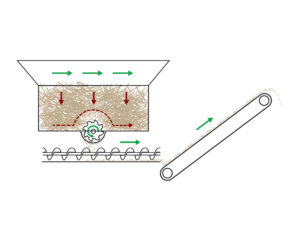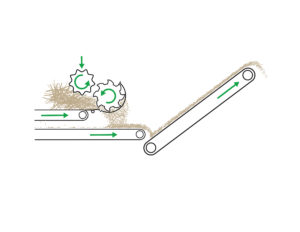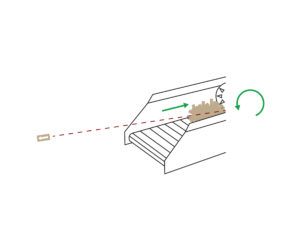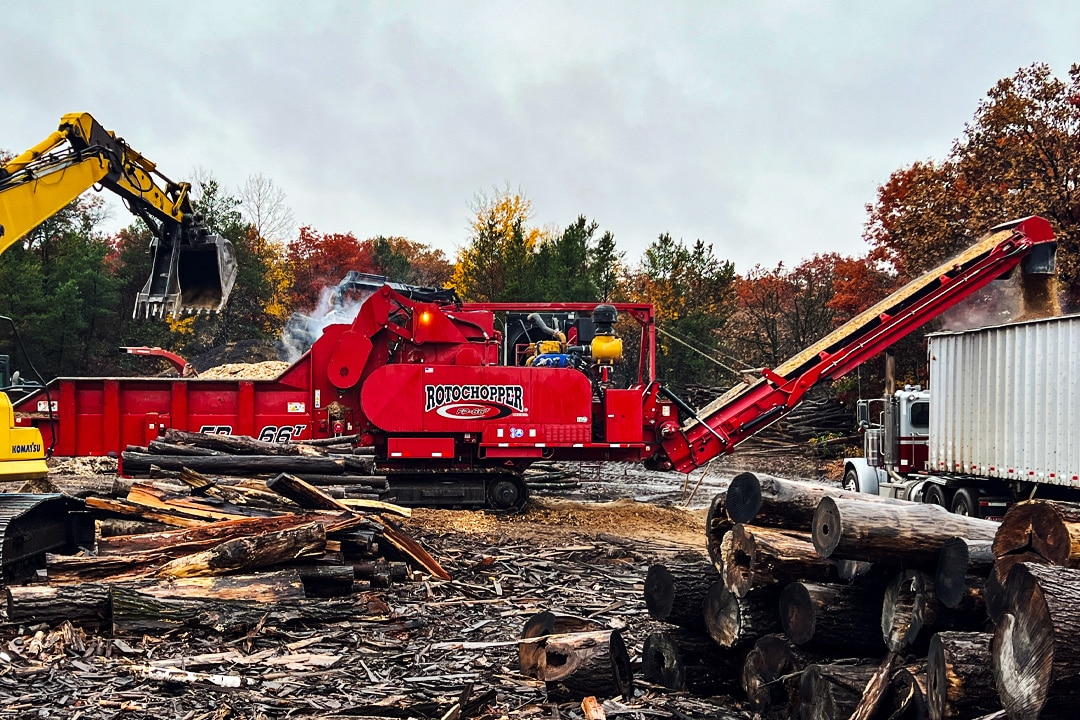
Horizontal grinders and tub grinders each offer unique advantages in different use cases, and the best grinder for your operation will depend on several factors, including feedstock and end product requirements. To maximize operational efficiency, project managers should understand the differences between horizontal and tub grinders before making a purchase.
Types of Tub Grinders
Agricultural tub grinders are designed to process baled and bulk agricultural feedstocks for use as animal feed and animal bedding. Generally smaller and lighter than industrial tub grinders, agricultural tub grinders are typically powered by a tractor PTO or an on-board diesel engine. Industrial tub grinders are designed for wood waste, green waste, and other feedstocks that need to be reduced in size for use as compost, mulch, and other products.
For the purposes of our comparison, all future references to tub grinders refer to industrial wood and green waste grinding solutions.
Finished Product Control
Industrial tub grinders are used for the primary grinding of raw materials and are not capable of efficiently achieving finished product specs from wood fiber and similar feedstocks.
Horizontal wood waste grinders provide much more control and allow operators to efficiently achieve the small particle sizes required for landscape mulch, animal bedding, compost additive, and other finished products.
Horsepower Efficiency
Tub grinders rely on the force of gravity and tub rotation to regulate feed rates, meaning efficiency is tied to the consistency of feedstocks. These grinders may have difficulty feeding lighter materials, such as tree limbs, slabs, and corn cobs, which may “float” above the rotor without sufficient weight to force them into the rotor teeth. Similarly, heavier feedstocks like bark; dense, round bales; and compost can feed too quickly, causing rotor lugging or even plugging. Tub grinders may experience extreme fluctuations in horsepower efficiency, as feed material alternates between floating above the rotor and being sucked into the grinding chamber.
Horizontal grinders provide better control over feeding rates because feedstock is delivered into the grinding chamber at a steady speed. The powerfeed drum (feed roll) of a horizontal grinder digs into feed material, providing operators a level of feed rate control much greater than a tub grinder. If raw material feeds too quickly, horizontal grinders can reverse the powerfeed drum and infeed conveyor to allow the engine or electric motor to recover.
Rotochopper’s diesel and electric horizontal grinders feature the most aggressive powerfeed drum design in the industry, providing controlled feed rates for forestry slash, wood chips, pallets, slabs, and a wide range of other feedstocks. Our patented slab ramp allows operators to efficiently process pliable feedstocks that can plug other grinders, including palm fronds and tomato vines. When equipped with our unique bale pre-processing system, our horizontal grinders offer unmatched efficiency for grinding round bales.
Industrial Grinder Safety
It’s not uncommon for tub grinders to eject un-grindable objects and feedstock debris from their rotors at high speeds, endangering nearby employees and operators. Because the rotor is exposed at the bottom of the tub, a tub grinder can easily throw objects unless it is packed with raw material. Some tub grinders incorporate covers or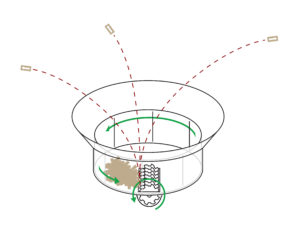
Thrown objects are also a risk with horizontal grinders and require conscientious, trained operators who follow safety policies designed to minimize workplace hazards. Horizontal grinders, however, confine the thrown object hazard zone to a much smaller space that extends forward and slightly outward from the feed opening, allowing operators to conveniently manage their safety policies. A horizontal grinder generally will not throw objects nearly as high or far as a tub grinder because the top portion of the rotor is not exposed.
Rotochopper diesel and electric horizontal grinders feature a down-cut rotor design, further limiting the distance that thrown objects travel. As with all high-speed grinding equipment, the thrown object hazard zone for a Rotochopper grinder requires safety precautions, including the use of enclosed cab loading equipment and personal protective equipment.
Optimize Your Operation
Upon their introduction, tub grinders revolutionized the recycling industry as excellent wood waste grinders and green waste grinders. Since their development in the early 1990s, horizontal grinders have been steadily replacing tub grinders, favored for their superior efficiency, finished product size control, and increased safety.
The Rotochopper advantage optimizes these inherent benefits by delivering the results you need from your raw materials at low operating costs. Our horizontal grinders are widely recognized for superior particle size control, and our commitment to innovation allows operators to transform diverse feedstocks into premium colored and natural landscape mulch, animal bedding, and other uniformly sized products.

